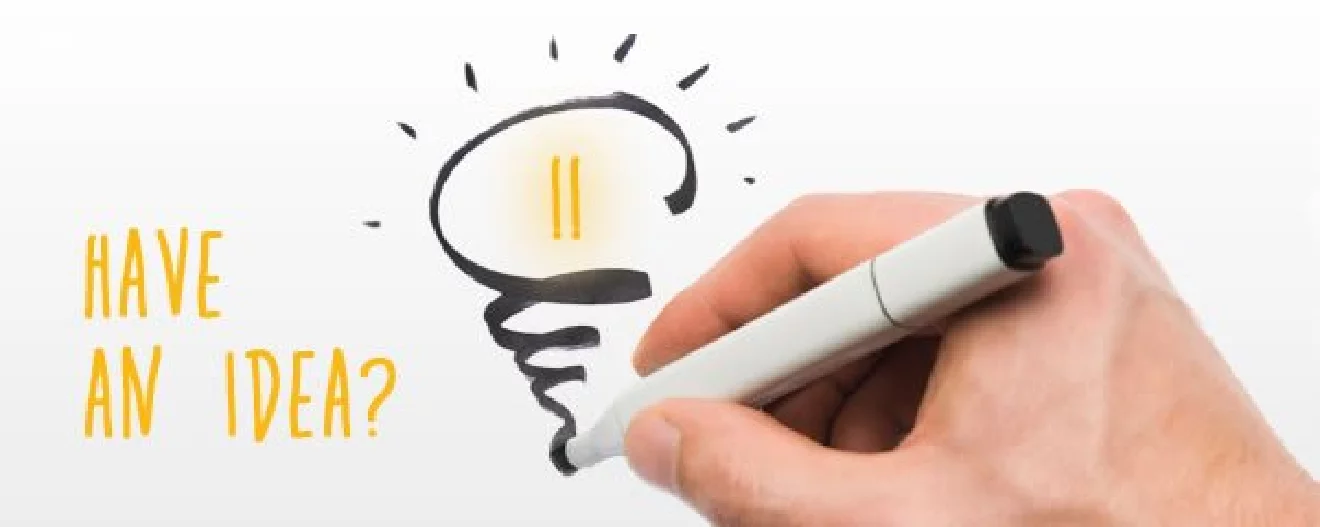Web Application Development
I Have a Great Idea… Now What?

What exactly is an idea and where it comes from…
- It might hit you when grocery buying at the supermarket, at the same time as you’re on the salon getting your hair done, or as you’re riding down the street: a brand new commercial enterprise idea hits you, and it doesn’t permit you to go!
- While you would possibly sense the urge to drop the whole lot else and soar on it, you should suppose rationally about any new business endeavor, how are you going to take a look at your business idea without going in a proper way?
- What can you do to validate it (this is, verify that it has capability worth pursuing) at the same time as expending the smallest quantity of attempt, time, and money viable?
- Great ideas come from everywhere, but, for most people, without a full-time dedication there are only a few notable options for turning their thoughts into a successful product or business.
What are the next steps?
- Validate your idea-
- This is probably the most essential step of launching a Business Idea. As you’ll be spending years running on this idea. Before thinking about the way to take your idea and make a product out of it, consider its viability.
- How specific is your concept?
- Does it clear up a real problem?
- Will your killer concept really take off as you count on it?
- This is probably the most essential step of launching a Business Idea. As you’ll be spending years running on this idea. Before thinking about the way to take your idea and make a product out of it, consider its viability.
Before getting too much excited and making any investment, time, and sources into your idea, focus on finding out if there’s a real need for it.
- Why is my product needed-
- We all know the fact that there isn’t any service or product that hasn’t been invented yet. So when you get it rolling and start working on your business concept, do not get discouraged and abort your assignment once you discover your product is not cent percent unique.
- There is no need to reinvent the whole idea. Use the prevailing opposition on your benefit and use their performance information to understand the market better, the customers, the product, and the rate structure, find out what works for them and wherein they need to enhance — and combine those factors into your very own product!
- Present your idea not as a product but as a solution to an existing problem, sell the idea not the result, and introduce a solution in the market, not just a commercial product.
- Research it as much as possible-
- The first step for validating your concept/idea is to study the marketplace.
- Research the competitive panorama, and ask yourself:
- Why has no one completed this before?
- Why can I do it better?
- While you’re analyzing the solutions to these questions, be aware of how a whole lot of money is there to be made irrespective of how excited you are about your idea, you’ll always want to ensure that it’s the one that can grow to be worthwhile.
- The most vital step is to calculate the dimensions of your market. Ideas with massive market capacity tend to be tons more feasible, so in case your expected attain is too small, reflect on consideration on how you can adapt your concept.
- This basically means that you need to do marketplace research in order to understand the dynamics of the enterprise into which your product fits.
- It can be of the following types:-
- Surveys, which may be accomplished very inexpensively on the internet
- Attention groups of purchasers to decide how they react to your product or idea,
- Aggressive evaluation to determine what selections consumers have, other than your product.
Benefits
A key benefit of competitive studies is that you may discover if it’s simply you who has the big idea or whether a person else also has it.
As they say, if you’re thinking it, someone else is already doing it. That can be pleasant, due to the fact your solution may be better, however, you should continue to understand what else is on the market.
- Lock it & Protect it –
- Lock it- Creative thoughts rarely come in a sequential and orderly manner, so whenever we get amusing, this information can often be overwhelming to our brain and given in the most unstructured way. That’s why, it is important to arrange our mind, and the fine manner to do that is through writing it down the way it suits us.
- Protect it- Many of us are always keen to tell the world a new concept before actually achieving something in it, and we know it is complicated to defend or challenge a thought theft once it is being converted from an idea to an invention. Thus, protecting the idea becomes a crucial step and we should consult a trusted advisor if it is necessary to protect a proprietary concept.
- Follow the “Lean Concept” –
- Now that you’ve prepared all the thoughts around your idea, it’s time to trim down your business idea. Your intention here is to lessen your commercial enterprise concept to its maximum critical core feature (highlight it to your business model canvas!), except all capabilities that can be seen as “additional” and may be brought on later. The result is your “lean” business concept, a narrow version of the absolutely loaded package you’ve just assembled.
Lean Concept in simple words
The company determines a trial period and sets many goals that will be revisited at the end of that time frame. If the goals have been met, the product can be expanded with more features, or altered as the market requires.
![]()
Basic Principles of Lean Concept
- Proof of Concept (POC) to validate the idea
- Proof of Concept (POC) refers to an initial test of an idea, method, or product to show its potential and feasibility in real-world settings.
- A proof of concept takes place during the ideation phase of a project before tremendous design and engineering work actually begins at the project and usually consists of a small and comparatively easy or undeveloped version of the favored result.
- The cause of a proof of concept is to validate assumptions and illustrate that a new product or idea can be successful.
- Team members can use the proof of concept as a tangible way to help discover any unforeseen dangers inside the production or execution of the product or idea.
Read our article on – What’s new in iOS 15 & iPadOS 15!
- Create a Prototype/Minimum Viable Product (MVP)
- MINIMUM VIABLE PRODUCT (MVP):-
- A Minimum Viable Product (MVP) is a concept from Lean Startup that stresses the impact of learning in new product development.
- Eric Ries defined an MVP as that version of a new product that allows a team to collect the maximum amount of validated learning about customers with the least effort.
- This validated learning comes in the form of whether your customers will actually purchase your product.
- MINIMUM VIABLE PRODUCT (MVP):-
- Benefits of MVP
A key premise behind the idea of MVP is that you produce an actual product (which may be no more than a landing page, or a service with an appearance of automation, but which is fully manual behind the scenes) that you can offer to customers and observe their actual behavior with the product or service. Seeing what people actually do with respect to a product is much more reliable than asking people what they would do.
- Difference Between a Prototype and Proof of Concept (POC)
- Although a Proof of Concept (POC) would possibly appear similar to a prototype, their goals are disparate.
- A prototype is an actual working version of a product that suggests exactly how the product will function in terms of mechanics, design, user experience, and so forth.
- Even as a Proof of Concept truly tests the viability of a new idea, prototypes show exactly how that idea can take place.
- A Proof of Concept might simply imitate how the product works, while the actual functionality of the product is carried out via humans or different types of equipment.
- Even a prototype could function enough like the final product that the customer could reliably use it to visualize the result.
- Difference Between a Minimum Viable Product (MVP) and Proof of Concept (POC)
- Although they have some things in common, Proof of Concept (POC) and Minimum Viable Product (MVP) differ notably from each other.
- Minimal Viable Product refers to a pared-down version of a brand-new product that only plays the core functionality, without any extra capabilities.
- The company can then test the minimum viable product or put it on the market for actual customers to try.
- The motive of a minimum viable product is to test whether there’s a market for the core features of a brand-new product.
- The main reason startups fail is a lack of market need for their product, so it’s critical for an organization to test whether or not there is clearly significant interest in its product before spending time and money developing a complete-featured version of the product.
- Proof of Concept (POC) Process
- Understand your target market’s pain points:-
- Study what solutions your client base is seeking out through conversations with potential users, surveys, and marketplace research. Use your research to create a particular listing of pain factors that your product ought to resolve.
- Understand your target market’s pain points:-
- Compare possible solutions:-
- Use your list to map out potential solutions to the pain points it carries. evaluate the one-of-a-kind answers for feasibility, cost, timeline, and other factors. Take your top solutions again to potential customers to consult with them.
- Create a proof of concept:-
- Armed with feedback from potential users, create a proof of concept of the product that addresses pain points and presents answers. Have the representatives from your customer base test the percent and provide input.
- Refine the product idea according to feedback:-
- Use the feedback from your potential users to fine-tune the product idea. Identify what works about the solution, besides regions of improvement primarily based on consumer reactions.
- Finalize your proof of concept:-
- Create a finalized proof-of-concept proposal that presents the functionalities, features, and benefits of the product. The proposal must additionally consist of info like timeline, cost, fulfillment criteria, and resources needed. The finished proof of concept may be presented to stakeholders, who can approve the product for development.
Reference – Forbes, and Entrepreneur
“We transform your idea into reality, reach out to us to discuss it.
Or wanna join our cool team email us at [email protected] or see careers at Startxlabs.”

Ready to start with us ?